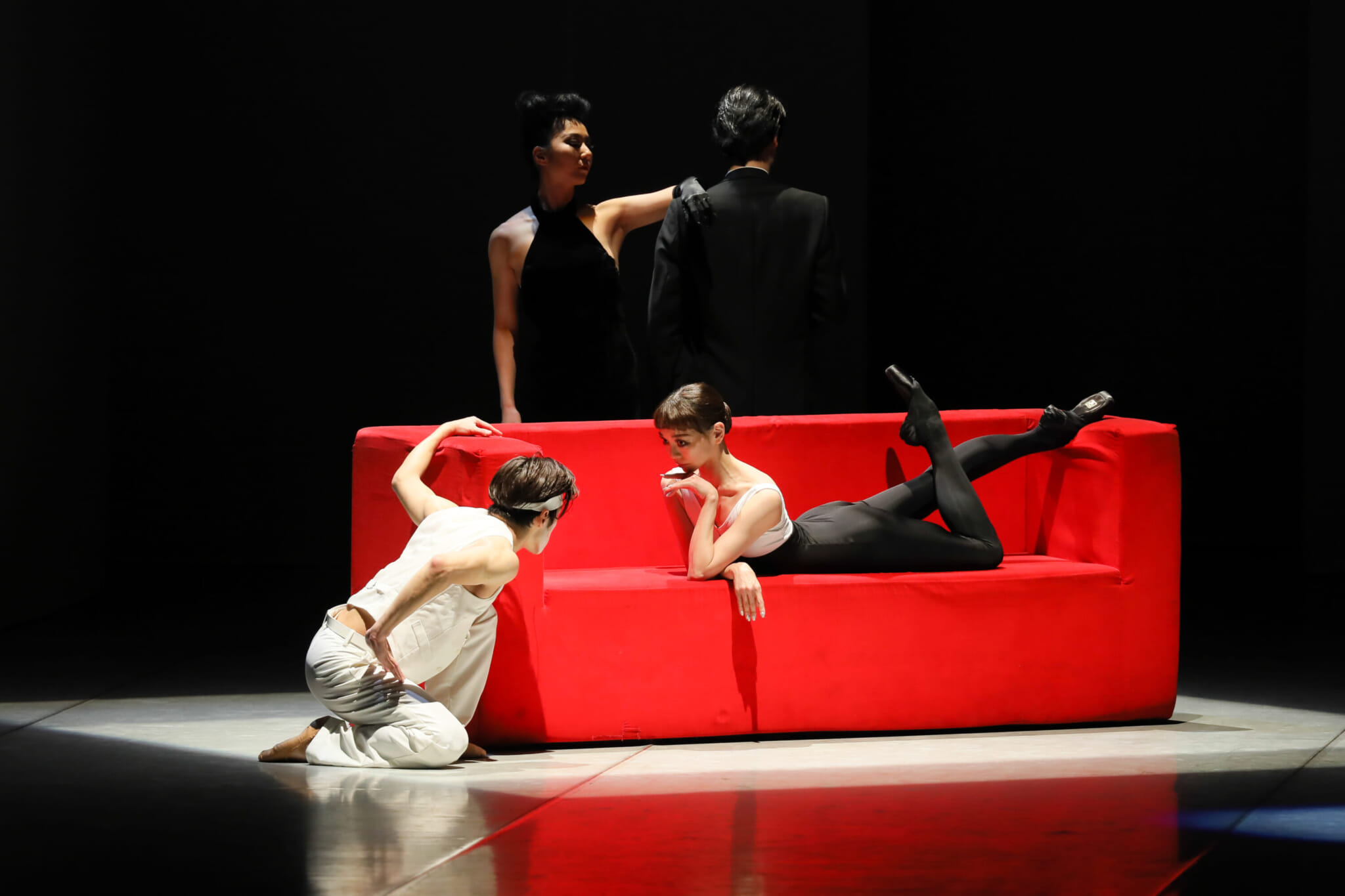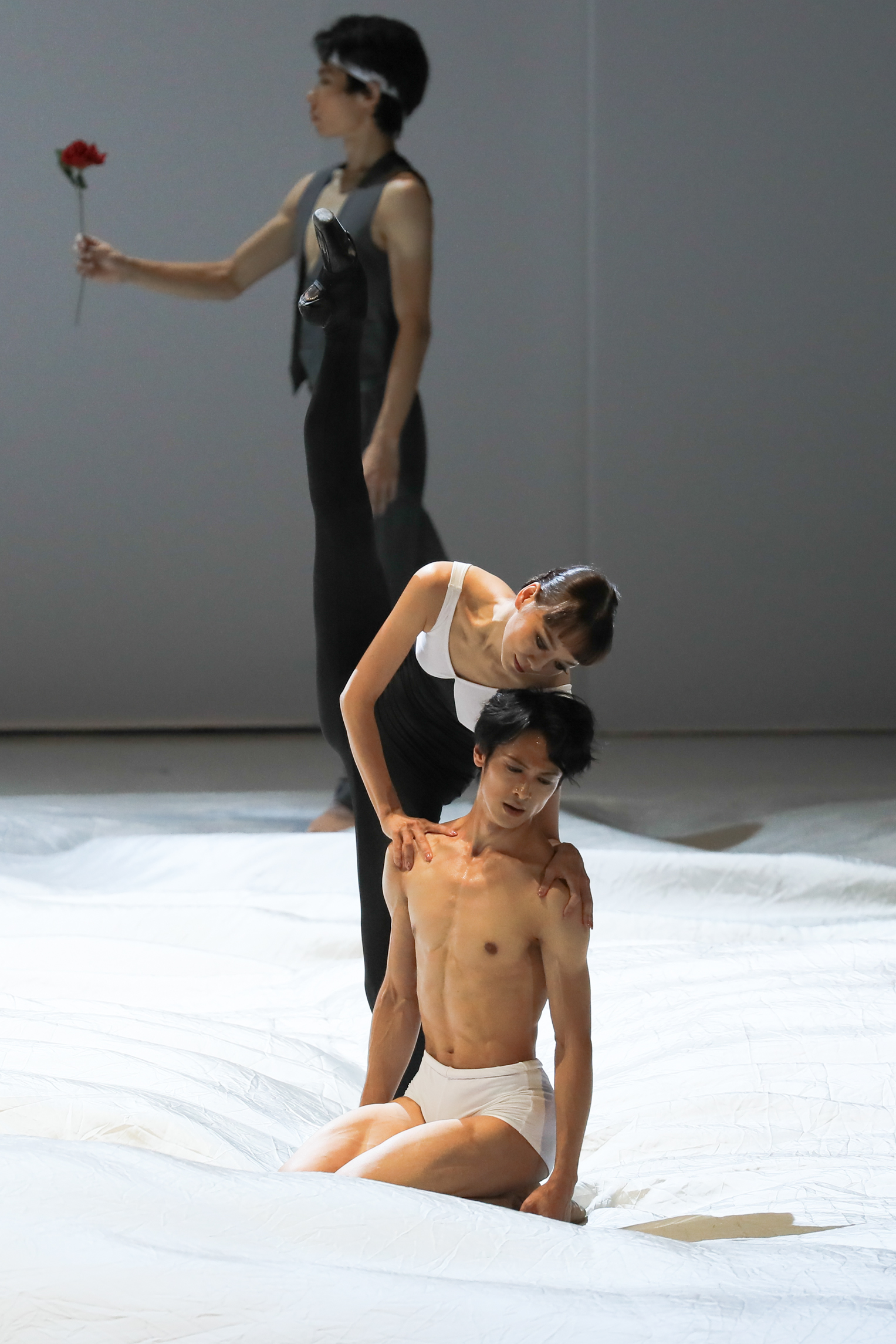More than just a ballet, M is a rare artistic encounter between two cultural titans: Maurice Béjart, one of the most celebrated choreographers of the 20th century, and Yukio Mishima, one of Japan’s most provocative literary figures. Premiered in 1993 and created exclusively for the Tokyo Ballet, it returns to the stage this summer after a five-year hiatus, bringing to life a profoundly Japanese story through Béjart’s distinctive choreographic vision.
For admirers of either artist, M is a once-in-a-lifetime experience: a bold, emotionally charged work that channels Mishima’s intensity through Béjart’s daring physicality. And even for those unfamiliar with both, it’s a riveting, visually arresting performance that leaves a profound impact — one that can only be seen at the Tokyo Ballet for three days this September.
A Ballet Like No Other
Though Béjart is best known internationally for Boléro and The Rite of Spring, he has a unique relationship with Japan. In 1986, he collaborated with the Tokyo Ballet to create The Kabuki, a full-length ballet based on the famous kabuki play Kanadehon Chushingura. Seven years later, he turned his attention to Mishima, a controversial and influential author whose death by ritual suicide in 1970 remains a subject of fascination in Japan.
M takes Mishima’s life and legacy as its subject, but it transcends biography, exploring sweeping existential themes like love, beauty, death and rebirth. This is reflected in its title: M stands for Mishima, of course — but also for Maurice (Béjart) and five French words that define the core of the work: mer (sea), métamorphose (transformation), mort (death), mystère (mystery) and mythologie (mythology).
These themes appear throughout the production in literary references drawn directly from Mishima’s canon. Fans of the author will recognize nods to The Temple of the Golden Pavilion, Kyoko’s House and Confessions of a Mask. The ballet unfolds as a series of surreal, dreamlike tableaux — from fevered pas de deux to haunting ensemble scenes — each one expressing a fragment of Mishima’s psyche as he moves toward his dramatic, self-orchestrated death.

PHOTO BY KIYONORI HASEGAWA
Immersing Audiences in Mishima’s World
Visually, M is rich with elements that reflect Mishima’s Japan. Costumes are inspired by Japanese military uniforms and traditional dress, while the stage conjures stark, symbolic settings drawn from his novels. The staging is both graceful and arresting, at once minimal and pulsing with emotion.
“There’s a stunning moment near the end of a sakura fubuki (cherry blossom blizzard),” says Mizuka Ueno, a principal dancer with the Tokyo Ballet. “With the music and atmosphere, it’s the kind of scene that I don’t doubt will bring people to tears.”
Ueno plays a role known simply as “Woman,” based on the femme-fatale protagonist of Kyoko’s House. “There’s a pas de deux I perform to machine-like music. It’s meant to be a confrontation between a man and a woman,” she says. “The movement can easily become mechanical, and as the only female role in the show, I have the responsibility of finding the softness, dignity and strength within the choreography.”
What is perhaps the ballet’s most unforgettable scene comes during Mishima’s death. Béjart stages his seppuku in metaphor: A long red ribbon is pulled from the body of the dancer portraying young Mishima. “It represents his intestines,” Ueno explains. “The ribbon stretches across the stage, and figures from his life grasp onto it, showing how they were intertwined with his fate. Knowing the story makes the scene even more powerful.”

PHOTO BY KIYONORI HASEGAWA
The Unique Language of Béjart
Death, in Béjart’s work, is not an ending but a passage. “He explores death in many of his ballets,” Ueno says. “But he treats it as something spiritual, almost like light. In M, there are characters named Ichi, Ni, San and Shi — but ‘Shi’ doesn’t just mean ‘four’ in Japanese. It also means ‘death.’”
That blending of the symbolic and the physical is central to Béjart’s approach; his work transcends dualities and defies easy categorization. “Béjart’s works are not classical or contemporary. They’re their own genre,” says Ueno. “A lot of the movements don’t follow melody or count. I really have to get the choreography in my body to embody the meaning.”
Ueno first danced the role of Woman in M 10 years ago. Since then, she says, both she and the Tokyo Ballet have evolved. “Last year’s [performance of] The Kabuki helped the company become more fluent in Béjart’s unique language,” she says. “I’m especially curious how my own experience — as a woman and as an artist — will shape my role differently now.”
With Béjart’s centenary on the horizon in 2027 and Mishima’s own 100th birthday commemorated this year, M arrives at a particularly resonant moment. It’s a production that invites audiences into the nuanced and evocative world of Mishima, enveloping them fully. “People who are familiar with Mishima’s works will adore M, of course,” Ueno says, “but I encourage those who haven’t read his works or don’t watch ballet to see for themselves. It will be unlike anything they’ve seen before.”
The Tokyo Ballet M Performance Dates and Ticket Information
The ballet will be performed on three dates in September at Tokyo Bunka Kaikan:
Saturday, September 20, 2025 – 14:00
Sunday, September 21, 2025 – 14:00
Tuesday, September 23 2025 (holiday) – 13:00
To buy a ticket, click here.
For access information to Tokyo Bunka Kaikan, click here.
Related Posts


AloJapan.com